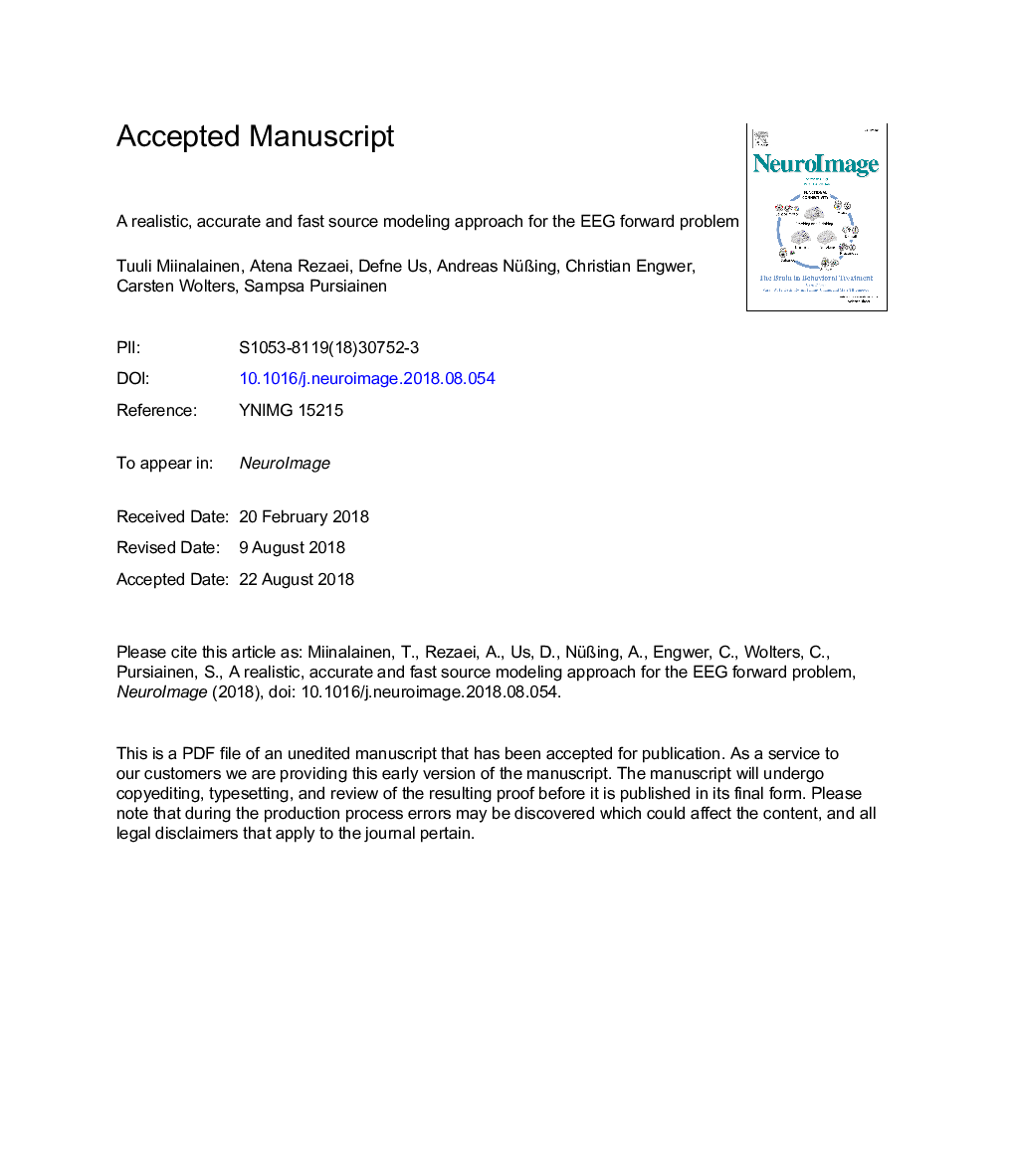| کد مقاله | کد نشریه | سال انتشار | مقاله انگلیسی | نسخه تمام متن |
|---|---|---|---|---|
| 10215530 | 1678892 | 2019 | 32 صفحه PDF | دانلود رایگان |
عنوان انگلیسی مقاله ISI
A realistic, accurate and fast source modeling approach for the EEG forward problem
دانلود مقاله + سفارش ترجمه
دانلود مقاله ISI انگلیسی
رایگان برای ایرانیان
کلمات کلیدی
موضوعات مرتبط
علوم زیستی و بیوفناوری
علم عصب شناسی
علوم اعصاب شناختی
پیش نمایش صفحه اول مقاله

چکیده انگلیسی
The aim of this paper is to advance electroencephalography (EEG) source analysis using finite element method (FEM) head volume conductor models that go beyond the standard three compartment (skin, skull, brain) approach and take brain tissue inhomogeneity (gray and white matter and cerebrospinal fluid) into account. The new approach should enable accurate EEG forward modeling in the thin human cortical structures and, more specifically, in the especially thin cortices in children brain research or in pathological applications. The source model should thus be focal enough to be usable in the thin cortices, but should on the other side be more realistic than the current standard mathematical point dipole. Furthermore, it should be numerically accurate and computationally fast. We propose to achieve the best balance between these demands with a current preserving (divergence conforming) dipolar source model. We develop and investigate a varying number of current preserving source basis elements n (n=1,â¦,n=5). For validation, we conducted numerical experiments within a multi-layered spherical domain, where an analytical solution exists. We show that the accuracy increases along with the number of basis elements, while focality decreases. The results suggest that the best balance between accuracy and focality in thin cortices is achieved with n=4 (or in extreme cases even n=3) basis functions, while in thicker cortices n=5 is recommended to obtain the highest accuracy. We also compare the current preserving approach to two further FEM source modeling techniques, namely partial integration and St. Venant, and show that the best current preserving source model outperforms the competing methods with regard to overall balance. For all tested approaches, FEM transfer matrices enable high computational speed. We implemented the new EEG forward modeling approaches into the open source duneuro library for forward modeling in bioelectromagnetism to enable its broader use by the brain research community. This library is build upon the DUNE framework for parallel finite elements simulations and integrates with high-level toolboxes like FieldTrip. Additionally, an inversion test has been implemented using the realistic head model to demonstrate and compare the differences between the aforementioned source models.
ناشر
Database: Elsevier - ScienceDirect (ساینس دایرکت)
Journal: NeuroImage - Volume 184, 1 January 2019, Pages 56-67
Journal: NeuroImage - Volume 184, 1 January 2019, Pages 56-67
نویسندگان
Tuuli Miinalainen, Atena Rezaei, Defne Us, Andreas NüÃing, Christian Engwer, Carsten H. Wolters, Sampsa Pursiainen,